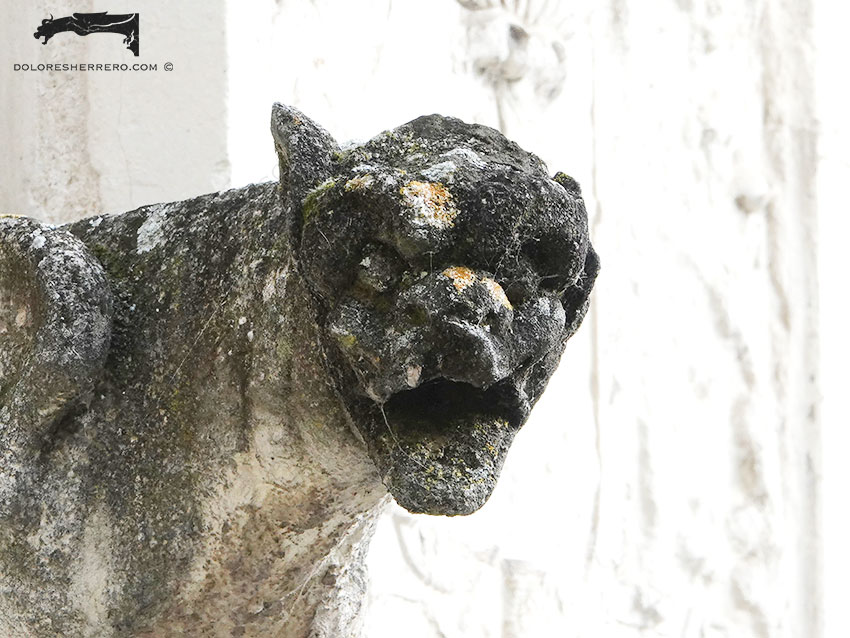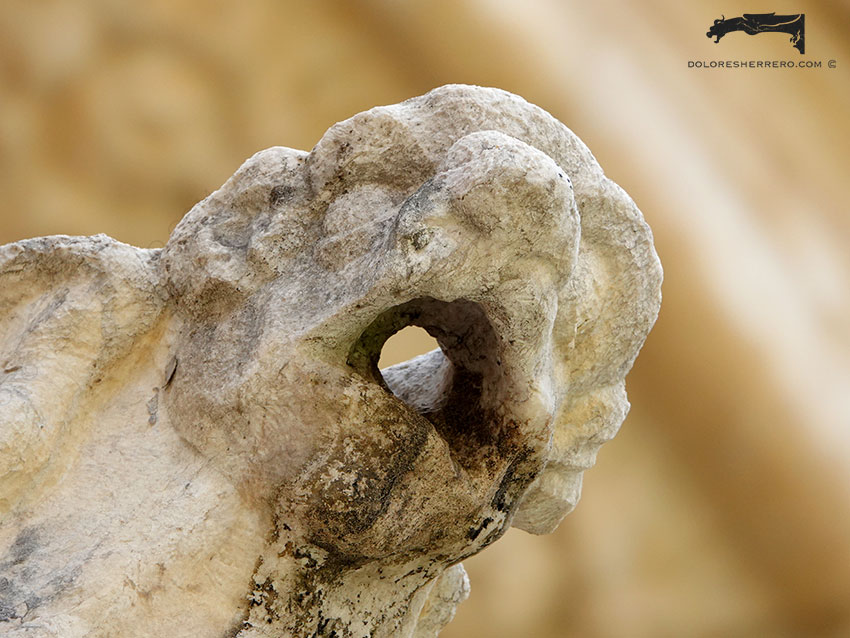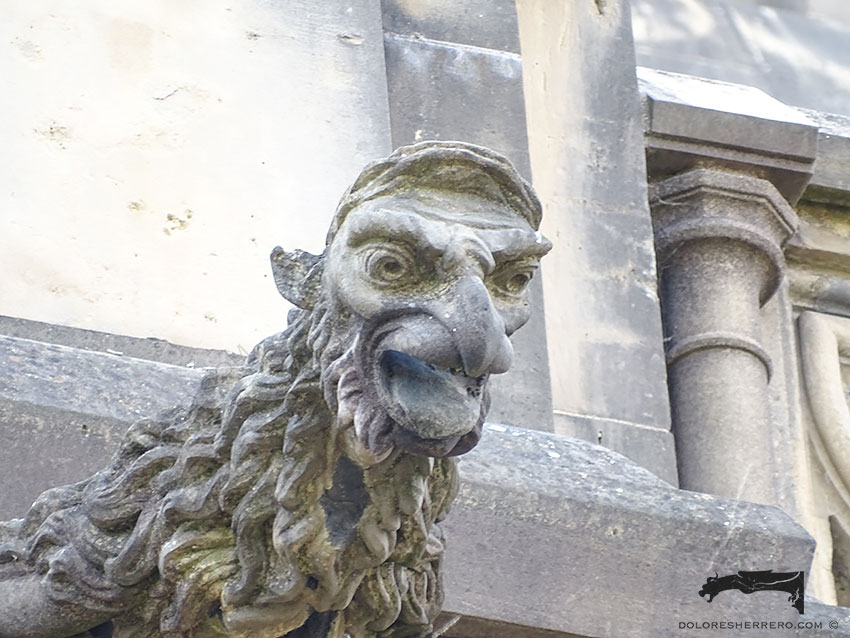Gargoyles and monsters
We’d like to devote this post to a fascinating subject, which is deeply connected to the world of gargoyles. We are referring to the monster, not only as a form but as a concept throughout history. Venturing into the universe of monsters is an engrossing task, although it will never be completed because of the sheer volume of documentary and bibliographic resources in existence on the subject. However, today we are encouraging you to embark on a journey through the fantastic world of monsters in art.
As we delve into how horror is viewed in art, we find countless terrifying images that usually provoke fear in whoever looks at them. Such visions appear from the most remote Antiquity and not only cause panic but also a sense of attraction, a tendency connected to the most essential part of our being.

Jerónimos Monastery in Lisbon (Portugal)
Monsters have been seen in a number of ways throughout the centuries. Rudolf Wittkower (1901-1971) defines monsters as “compound beings which have always haunted human imagination”. According to him, the Greeks channelled their terrors through the monsters of their mythology (centaurs, satyrs, sirens, etc.) but they also rationalised those fears by inventing monstrous species and animals that they imagined living far away, in the East, especially in India. All civilisations in Antiquity (China, India, Persia, Babylon, Egypt, Greece and Rome) portrayed deities in their buildings in both human and animal form, each with its own character.

Limoges Cathedral (France)
A series of monstrous figures or images coincided in various different yet geographically distant civilisations during the same period, for example, the winged quadruped. The most obvious reason for this coincidence is the influence between cultures by travel, trade and war, both in terms of people and of objects. But another cause could be “the product of certain immutable, logical or psychological laws” (Delacampagne, A. and C., 2005).
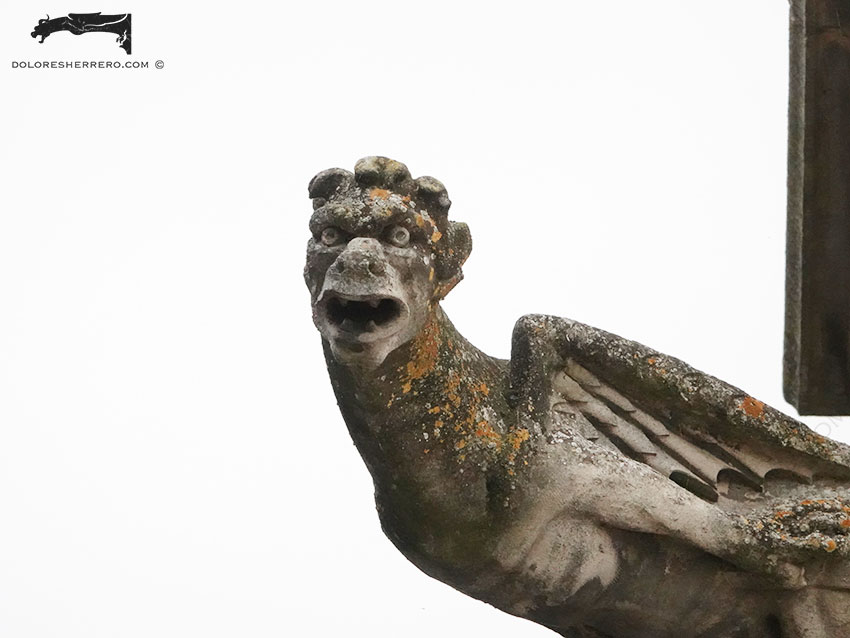
Château Royal in Blois (France)
But what functions do monsters fulfil in the human mind for them to persist over centuries? Many authors from different disciplines have analysed the subject from varying perspectives: psychological, artistic, philosophical and moral. Some have even linked it with psychoanalysis.
As Claude Kappler says, “searching for the monster is a productive hunt whose course is impossible to predict”. The same author defends the idea that monsters offer us a pathway to knowledge of the world and of oneself. Imagination, dreams, the irrational, everything relies on monsters. It’s a therapeutic medium, as through monsters we can express our emotions and anxieties. It is, in fact, a search for self-knowledge. Monsters also appear in art (primitive, surrealist, children’s, psychopathological) with a therapeutic function: “projecting ghosts onto a monster is equivalent to exorcising them, and therefore to judge them and be freed from them, either partially or fully. The monsters of the Temptations of Saint Anthony are not suffered passively by the saint, those temptations function as a kind of psychoanalysis”. Monsters belong to our inner, hidden world. Lascault says that we cannot separate the monster from the feelings it arouses in the viewer.
- Château Royal in Blois (France)
- Jerónimos Monastery in Lisbon (Portugal)
In his The Travels of Jean de Mandeville, Jean de Mandeville (14th century) describes monsters in a negative way, like a kind of madness of the imagination. The criterion is in Nature, in the idea of going against nature. Nature is the norm, order, perfection. Monsters are therefore imperfect, they are disorder. However, this leads us to think that disorder exists in Nature, although this disorder is part of a plan that we are unaware of. Saint Agustine (354-430) says that disorder only apparently exists. Ambroise Paré, in the 1573 edition of his work Of Monsters and Prodigies, describes monsters as “things that appear against the course of Nature”. And later, in the 1579 edition, he improves on the idea and says that “monsters are things that appear beyond the course of Nature”. This idea of linking monsters with deformity and disorder prompt us to view them as enemies of beauty. However, not everything that crosses boundaries has to be ugly, on the contrary, a monster can be beautiful precisely because it is an exception. As Kappler says, this shows that the concept of the monster is relative and subjective.
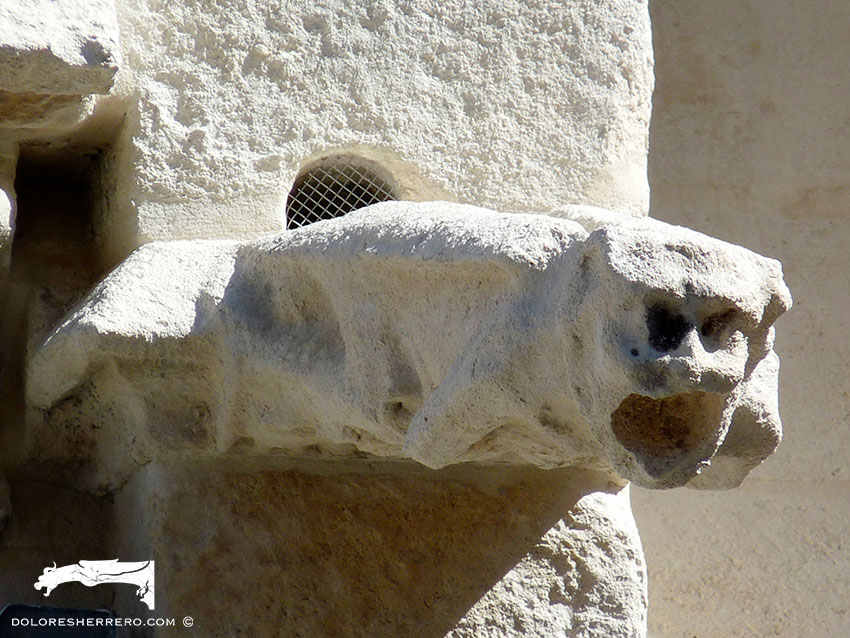
Burgos Cathedral (Spain)
Medieval scholar Jacques Le Goff (1924-2014) reflects on monsters in his book The Long Middle Ages and says that they were created by God, firstly to prove his omnipotence, as their existence shows that nothing limits him in his creation, not even reason; and secondly, to teach people what they should and should not be and do. To be a true child of God one must look at them and say: “I must not be like them”. But, for this comparison to be possible, monsters must not be completely inhuman. This is why they normally incorporate some human element.
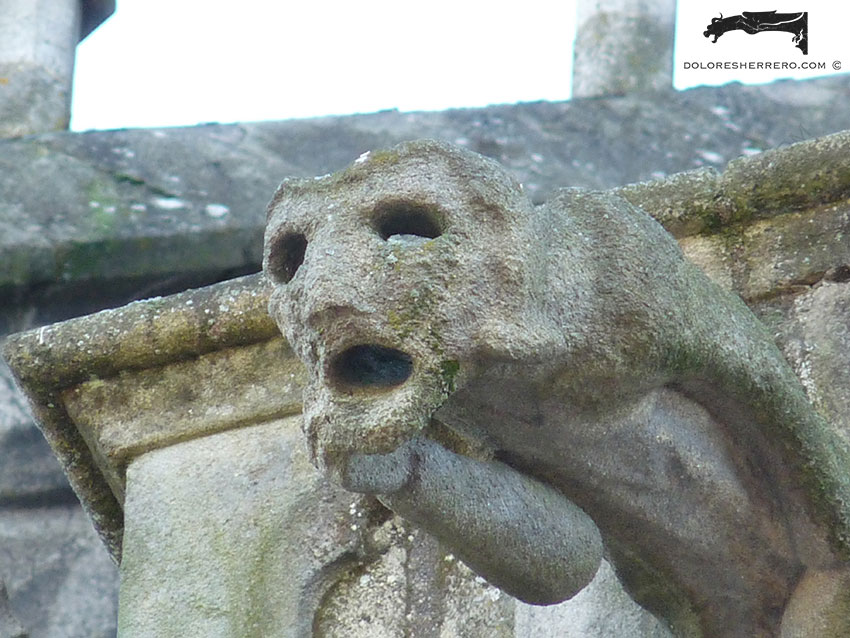
Limoges Cathedral (France)
In the late Middle Ages there was a greater interest in the diabolical. This meant that the monstrous, which had previously belonged to the natural and cosmological sphere, began to take on a new dimension from the 14th and 15th centuries onwards. They entered, as Kappler says, life, art, religion and theology. The devil, woman and the monster would form a powerful unit. There was a proliferation of monstrous images with Satanic, lewd features. Iconographic topics would be demonic: fighting dragons, the temptations of Saint Anthony, lewd acts, macabre dances, hellish punishments. These are all elements we see in the great work of Hieronymus Bosch (1450-1516).
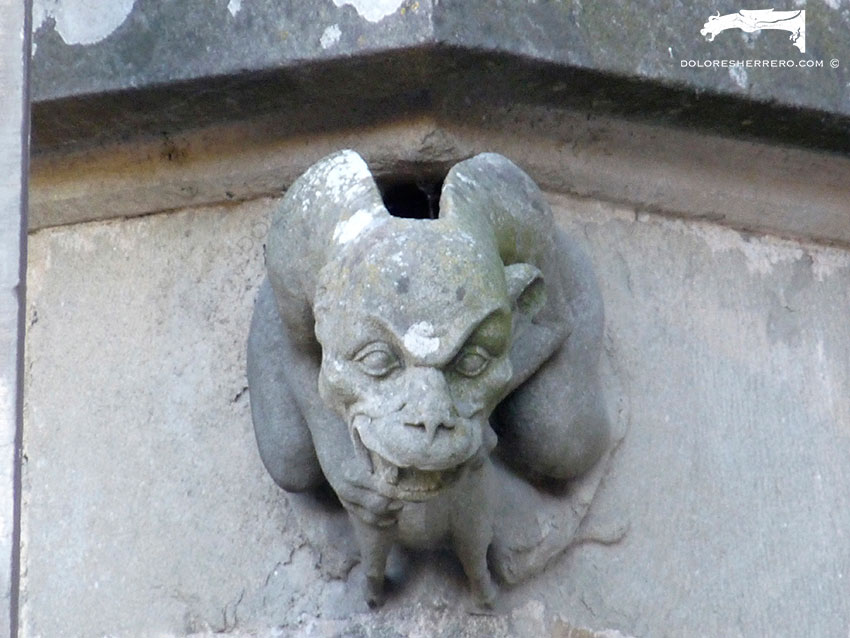
Basilica of St. Nazaire in Carcassonne (France)
As they mostly depict monstrous creatures, gargoyles are linked both artistically and conceptually to monsters. As we know, gargoyles, apart from their purpose as water drainage spouts, appear as one of the best examples of these visions of horror with the portrayal of all kinds of monsters and devils that seem to be watching us from buildings.
One of the symbolic functions attributed to gargoyles, and that we have already looked at in a previous post, is that they are meant to be intimidating. The idea behind this purpose is to provoke fear, especially when they’re on churches and cathedrals.
- Jerónimos Monastery in Lisbon (Portugal)
The image of the monster has always existed and will persist throughout time. Monsters are necessary. They are part of our psyche and they are a symbol of the need for balance between order and disorder, between yin and yang in the East, between good and evil in the West. The opposite (ugly, monstrous, demonic) is therefore necessary so as not to destroy balance, harmony and aesthetics in art.
There’s no doubt that beauty (perfection) coexists with ugliness (imperfection). Iconography throughout the ages is full of monsters. Each period and civilisation has had its own monsters but, as Kappler says, “the variants are of form and not of content”. All through history, they have remained in people’s imaginations, expressed in oral legends, in literature and in art.
Bibliography consulted
DELACAMPAGNE, A. y C., Animales extraños y fabulosos. Un bestiario fantástico en el arte, Madrid, Editorial Casariego, 2005.
KAPPLER, C., Monstruos, demonios y maravillas a fines de la Edad Media, Madrid, Ediciones Akal, S. A., 1986.
LASCAULT, G., Le monstre dans l´art occidental. Un problème esthétique, París, Editions Klincksieck, 1973.
LE GOFF, J., Una larga Edad Media, Barcelona, Ediciones Paidós Ibérica, S. A., 2008.
PARÉ, A., Monstruos y prodigios, Madrid, Ediciones Siruela, S. A., 2000.
RESSOT, J. P., Apología de lo monstruoso. Una lectura de la obra de Ramón J. Sender, Huesca, Instituto de Estudios Altoaragonses (Diputación de Huesca), 2003.
WITTKOWER, R., La alegoría y la migración de los símbolos, Madrid, Ediciones Siruela, S. A. Biblioteca de Ensayo 53, 2006.

Doctor of Art History and researcher specializing in the study of gargoyles.
I am Dolores Herrero Ferrio, and my thesis, “An Approach to the Study of Gargoyles of Gothic Cathedrals in Castilla and León”, is dedicated to the study of these fascinating figures.
If you like gargoyles and art history, you will also enjoy my book, “The Gargoyle and Its Iconography,” a book I have written with great care for those interested in the world of gargoyles.
I have created my own Encyclopedia of Gargoyles, a Gargopedia to share with you, where you will discover all the secrets and wonders of these enigmatic sculptures.
I hope you enjoy this Gargopedia as much as I have enjoyed creating it, and remember that each gargoyle has a story to tell, and here you will discover them all.
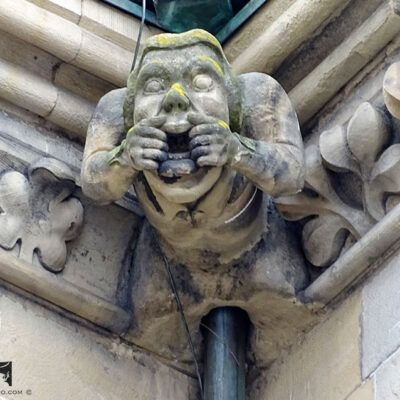 Gesturality in Gargoyles: Part One
Gesturality in Gargoyles: Part One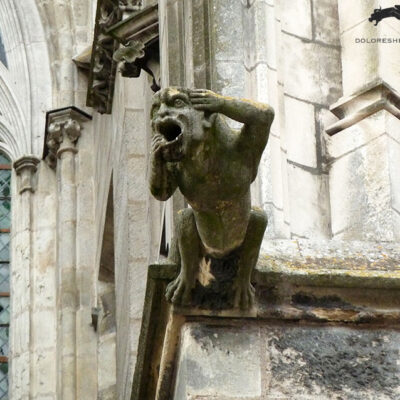 Gesturality in Gargoyles: Part Two
Gesturality in Gargoyles: Part Two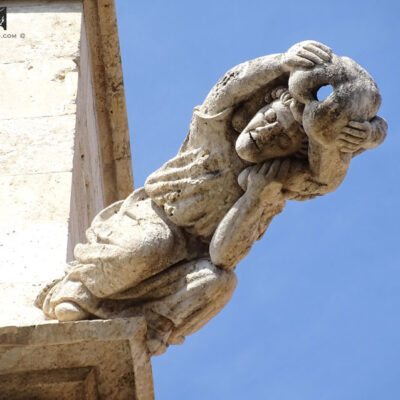 Water Drainage in Gargoyles
Water Drainage in Gargoyles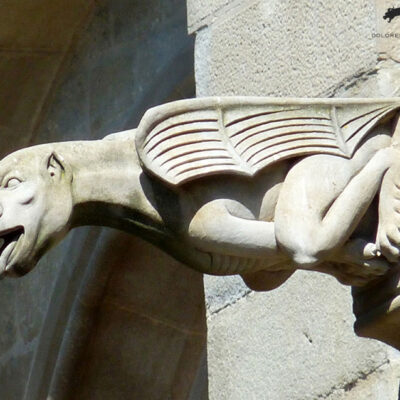 The Gargoyles and its Creator
The Gargoyles and its Creator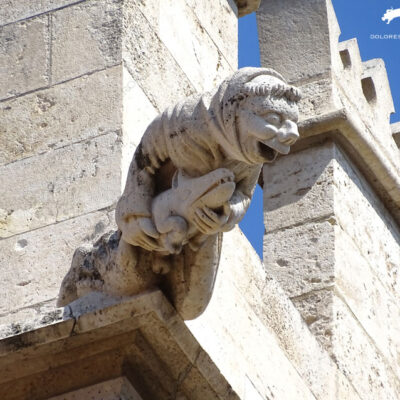 Gargoyles and their Small Companions
Gargoyles and their Small Companions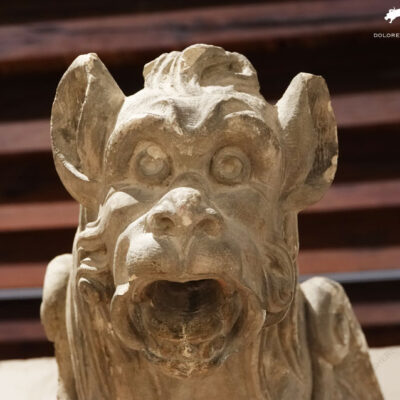 El monstruo en el arte: La gárgola y la visión de lo terrorífico
El monstruo en el arte: La gárgola y la visión de lo terrorífico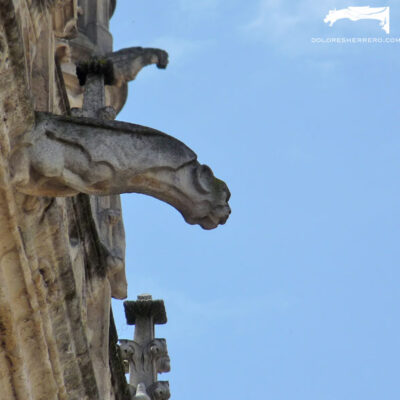 Gargoyles with Bat-like Wings: Dante’s Vision of the Devil
Gargoyles with Bat-like Wings: Dante’s Vision of the Devil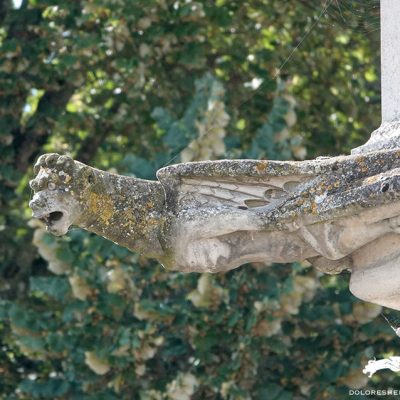 Gargoyles Encapsulating Symbols and Meanings
Gargoyles Encapsulating Symbols and Meanings